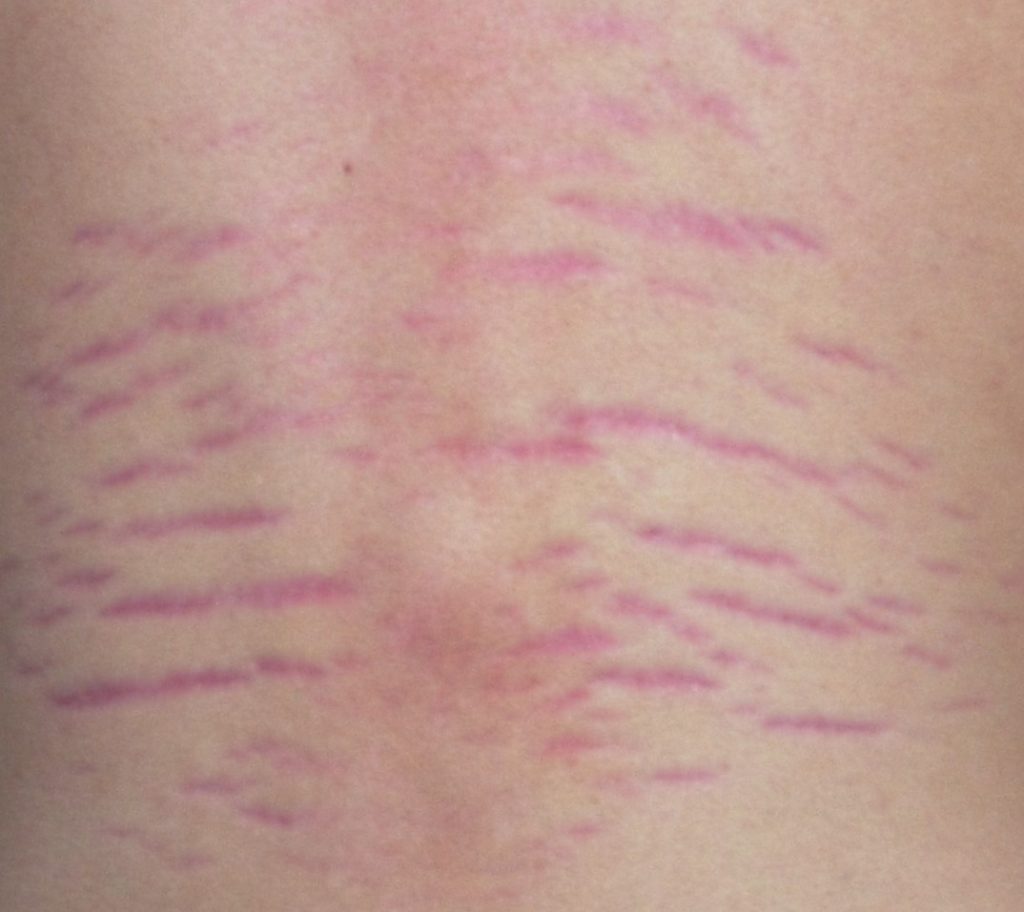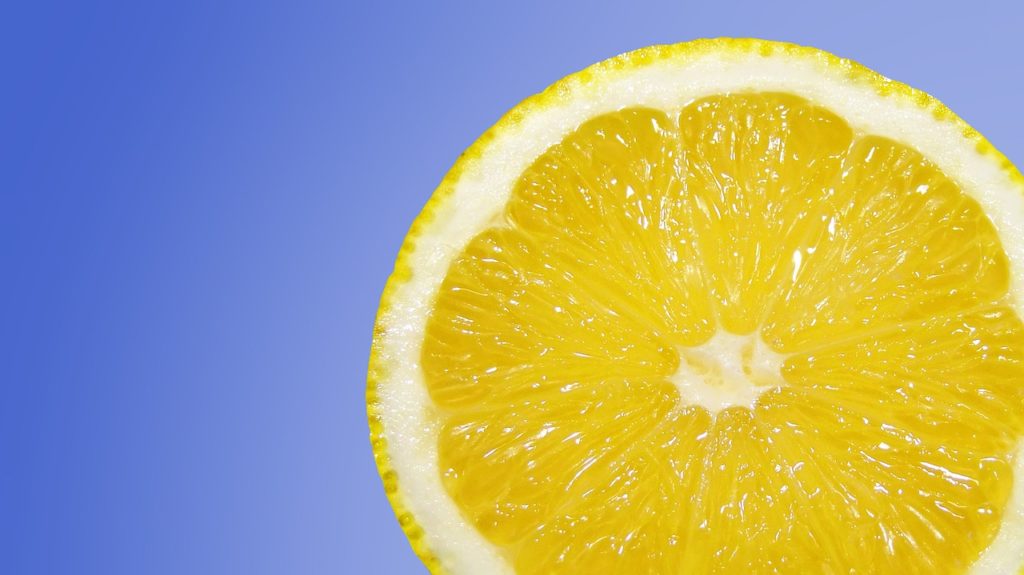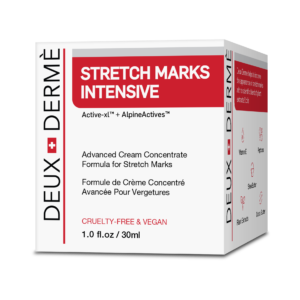Striae—more commonly known as stretch marks—are scars that form in the middle layer of skin. They appear initially as red or purple lines that may feel indented depending on the severity of the scarring, but they often fade and become lighter over time. Common places on the body where stretch marks form include abdomens, arms and armpits, breasts, thighs, and buttocks, but they are not exclusive to these areas and can develop anywhere on the body. Stretch marks can form on both women and men.
What Causes Stretch Marks?
Stretch marks generally form when the body changes shape rapidly, forcing skin to expand or contract. Pregnancy and weight gain are common causes of stretch marks, but stretch marks also frequently form after starting a new bodybuilding or weightlifting routine, during rapid weight loss, and during puberty when an adolescent has a growth spurt.
While rapid stretching or contraction of the skin is generally the catalyst for stretch mark development, it’s not the direct cause. The direct cause of stretch marks is diminished skin elasticity, usually as a result of inefficient collagen production in the body. Collagen is a protein produced naturally in the body. When collagen production is diminished, skin becomes more brittle and likely to tear and scar if combined with rapid changes in the shape of the body.
Preventing Stretch Marks
While some inescapable factors come into play in your likelihood of developing stretch marks—genetics, for example—there are ways to reduce your chances of stretch mark scarring:
- Harmful UV rays can diminish the body’s production of collagen, so wearing sunblock and avoiding tanning beds can assist in preventing stretch marks.
- Drinking the recommended amount of water each day can keep skin hydrated and less likely to tear when stretched.
- Eating certain foods like berries, green vegetables, and lean meats can encourage collagen production in the body and reduce your likelihood of developing stretch marks.
- Gaining or losing weight gradually rather than rapidly will reduce your chances of stretch marks forming by giving skin time to prepare for changes in shape.
- Frequent application of a stretch mark cream or lotion can reduce your chances of developing stretch marks by softening skin and increasing skin elasticity.
Stretch Mark Treatments
Sometimes even the best efforts in prevention go unrewarded, and you end up with stretch marks anyway. Unfortunately, stretch marks will not go away on their own; while they may fade in time, getting rid of stretch marks completely requires treatment. There are a number of ways to treat stretch marks:
- Microdermabrasion, chemical peels, and laser treatment are common ways to treat stretch marks and can be performed by a qualified doctor. However, these treatments can be expensive and time consuming.
- In extreme cases when stretch marks scarring on the abdomen is combined with excess skin due to weight loss, a tummy tuck can be performed to remove excess skin and stretch marks.
- Over the counter stretch mark removal products can be effective in reducing the appearance of stretch marks or eliminating them altogether. These products are less expensive alternatives to physician treatments and much safer than surgery.



